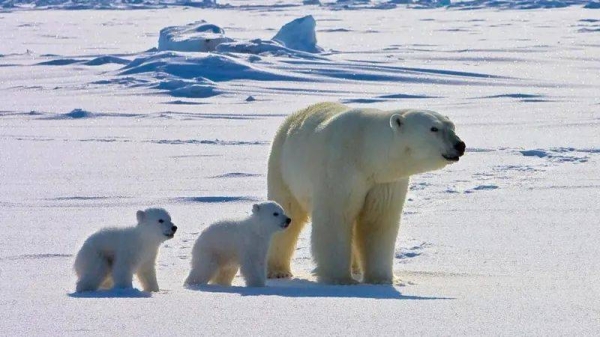The Arctic is warming, posing a growing risk to polar bears as they face an increased likelihood of contracting viruses, bacteria, and parasites that were not as prevalent 30 years ago. A recent study conducted in the Chukchi Sea, between Alaska and Russia, revealed that blood samples from polar bears taken between 1987 and 1994 showed fewer signs of infections compared to samples collected between 2008 and 2017. Researchers found that more recent blood samples contained chemical signals indicating that the bears had been infected with five different pathogens. This research sheds light on how polar bear health could be linked to the loss of sea ice in the Arctic.
The study focused on six pathogens, including viruses, bacteria, and parasites, that are typically associated with land animals but have been found in marine animals as well. Over the three decades covered in the study, there was a noticeable decline in sea ice and increased land use in the population of polar bears examined. This led researchers to investigate whether the bears were being exposed to new pathogens, particularly those normally found in terrestrial environments. The pathogens identified in the study included toxoplasmosis and neosporosis-causing parasites, rabbit fever and brucellosis-causing bacteria, and canine distemper virus.
Despite polar bears being resilient to disease, the shift in exposure to these pathogens suggests a changing environment in the Arctic. With only an estimated 26,000 polar bears remaining in the world, conservation efforts are crucial to their survival. Climate change is a significant threat to polar bear populations, with loss of sea ice impacting their ability to hunt for food. As top predators, polar bears primarily acquire pathogens through their prey species. The changes observed in pathogen exposure in polar bears could also be affecting other species in the Arctic ecosystem.
The International Union for Conservation of Nature has listed polar bears as vulnerable to extinction, highlighting the urgent need for action to protect these iconic animals. Previous research using collar cameras on polar bears has shown that they struggle to find sufficient food when sea ice is unavailable for hunting. The findings of this study suggest that the health of polar bears and other Arctic species are closely interconnected. As the Arctic continues to undergo significant changes due to climate change, understanding the impact on wildlife health is crucial for conservation efforts.
In conclusion, the research on polar bear diseases in the Arctic serves as a warning sign of the broader impacts of climate change on wildlife. The increasing exposure of polar bears to pathogens previously associated with terrestrial animals underscores the interconnected nature of ecosystems and the need for comprehensive conservation strategies. With the Arctic warming at a rapid pace, efforts to mitigate the effects of climate change and protect vulnerable species like polar bears are more important than ever. By understanding and addressing the health challenges facing polar bears, researchers and conservationists can work towards safeguarding the future of these majestic creatures in a changing Arctic landscape.










